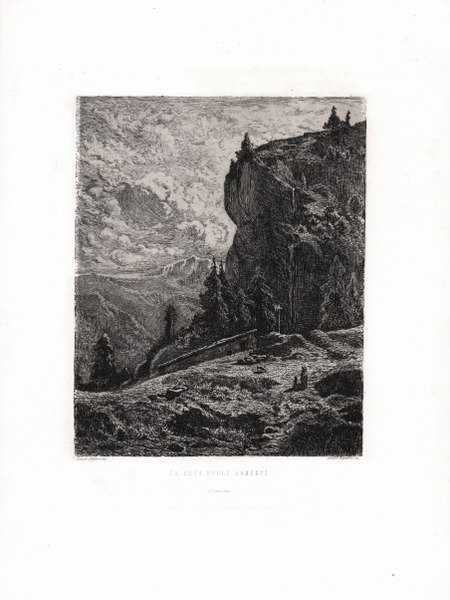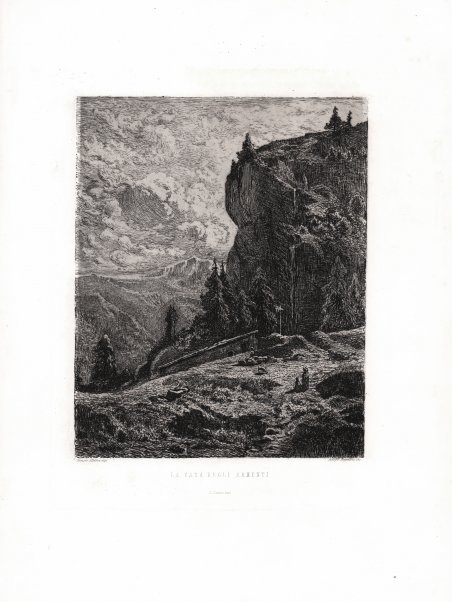Details
Description
Acquaforte di Adolfo Bignami da un dipinto di Ernesr Allason. Acquaforte, 202x166 mm. foglio 360x 260. Esemplare stampato a Torino da Carlo Lovera per ' Arte in Italia ' del 1870. Il Bignami coniugò l’attività di pittore a quella, prevalente, di acquafortista, legato al gruppo degli incisori piemontesi della seconda metà dell’Ottocento dominato dalla personalità di A. Fontanesi. Tra il 1869 e il 1870 visse a Firenze, che raffigurò spesso nei suoi paesaggi. A Torino partecipò, dal 1863, alle mostre della Società Promotrice, affermandosi nel 1871 con tre dipinti: Il pasto ai pulcini, L'ultima ora del lavoro e Le nebbie del mattino in riva all'Arno. Nello stesso anno si segnalò alla Promotrice di Bologna con due paesaggi giudicati «d’impronta vera e di fattura coscienziosa». Le notizie sulla sua attività espositiva si fermano al 1877, poiché l’artista dovette rinunciare precocemente alla pittura per una malattia agli occhi e per vicissitudini familiari. ' In ottimo stato di conservazione. Etching, lettered along bottom 'Ernesto Allason dip Adolfo Bignami inc' followed by title and 'C. Lovera imp.'. Example (platemark mm 202x166; sheet mm 360c260) printed by Carlo Lovera for the monthly magazine L’Arte in Italia, 1870. A cottage set beneath a huge mountain, figures and sheep in the foreground. Bignami combined the activity of painter to that, prevalent, etching, linked to the group of Piedmontese engravers of the second half of the nineteenth century dominated by the personality of A. Fontanesi. Between 1869 and 1870 he lived in Florence, which often depicted in his landscapes. In Turin participated, since 1863, the exhibitions of the Society Promotrice, establishing himself in 1871 with three paintings: The meal of chicks, The last hour of work and The morning mists on the banks of the Arno. In the same year he was noticed at the Promotrice of Bologna with two landscapes judged "of true imprint and conscientious workmanship". The news about his exhibition activity stop in 1877, since the artist had to give up painting early because of an eye disease and family vicissitudes. ' ' Cfr.


Find out how to use
Find out how to use

